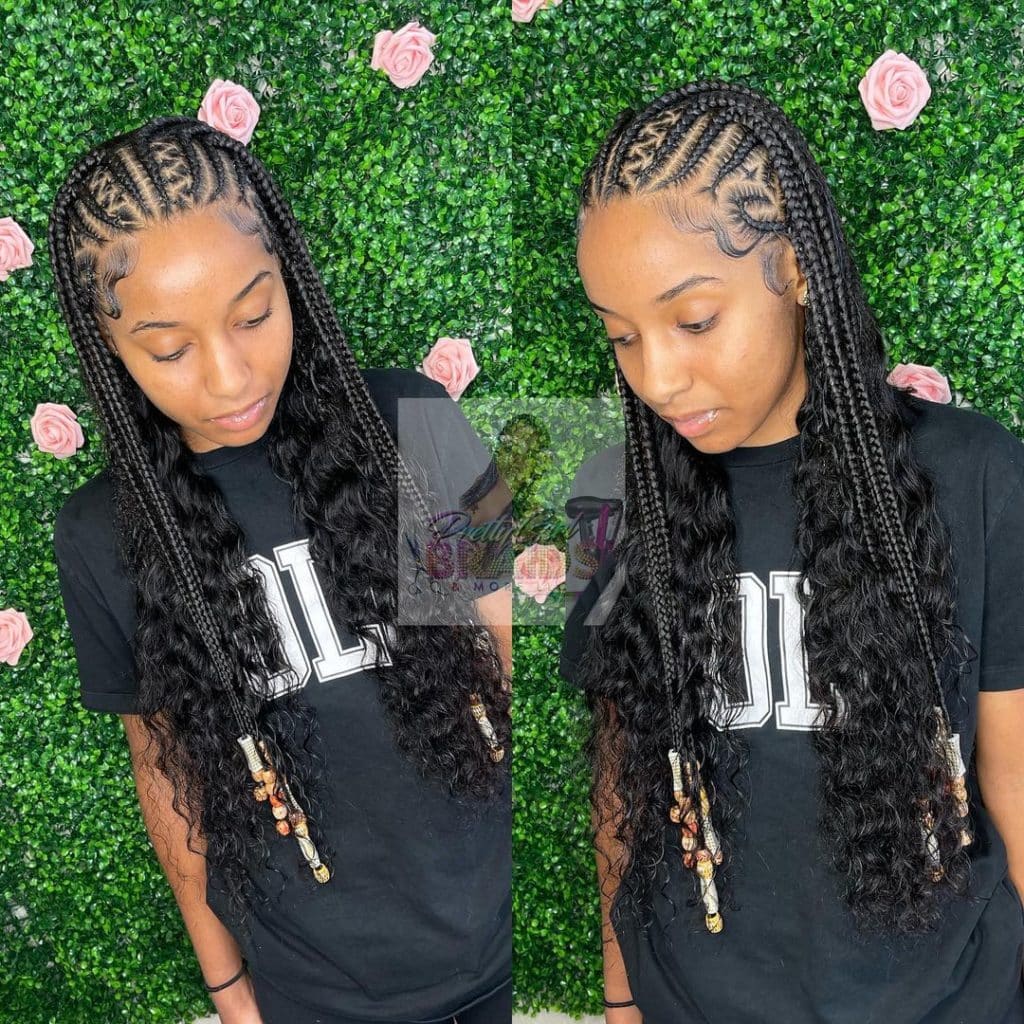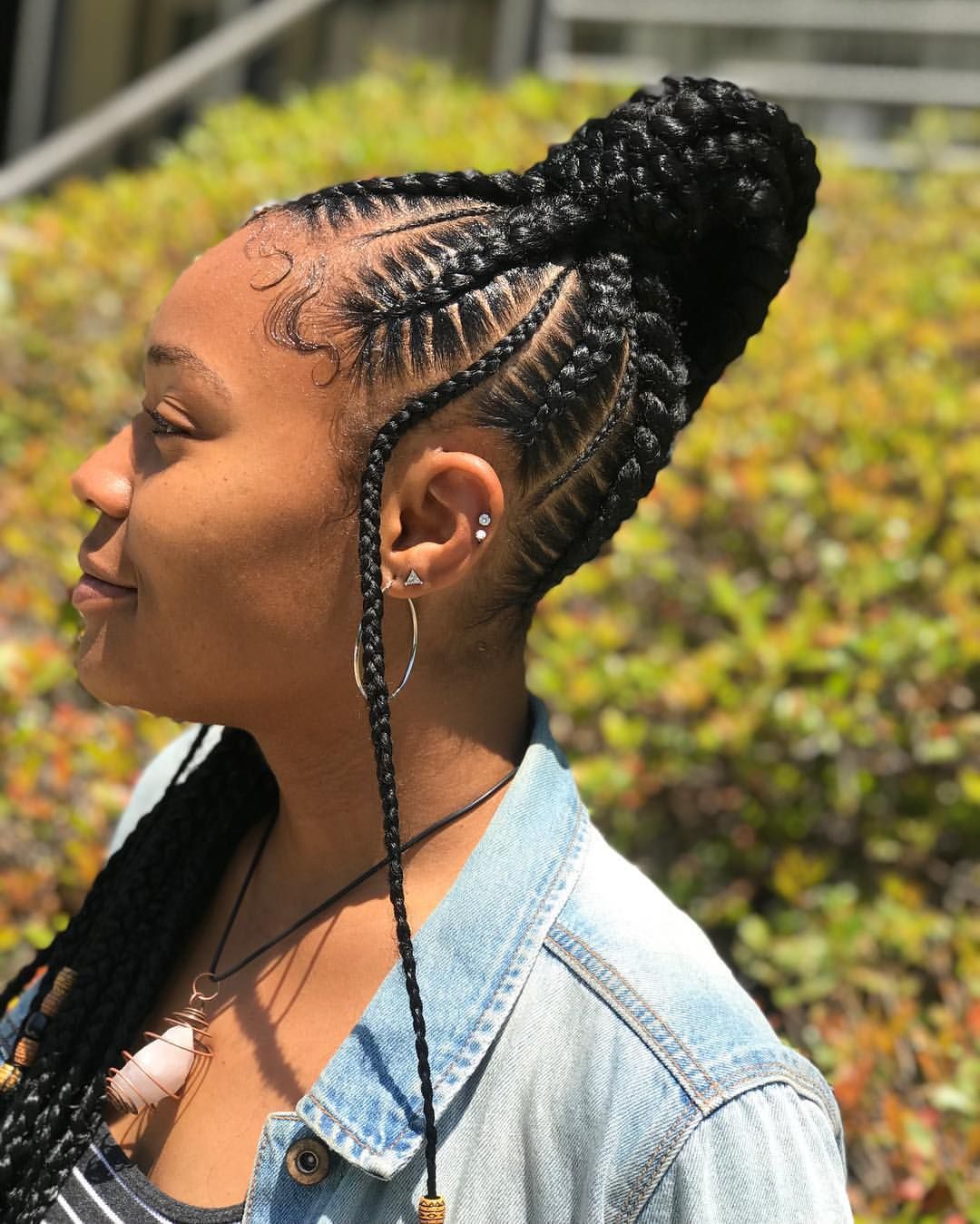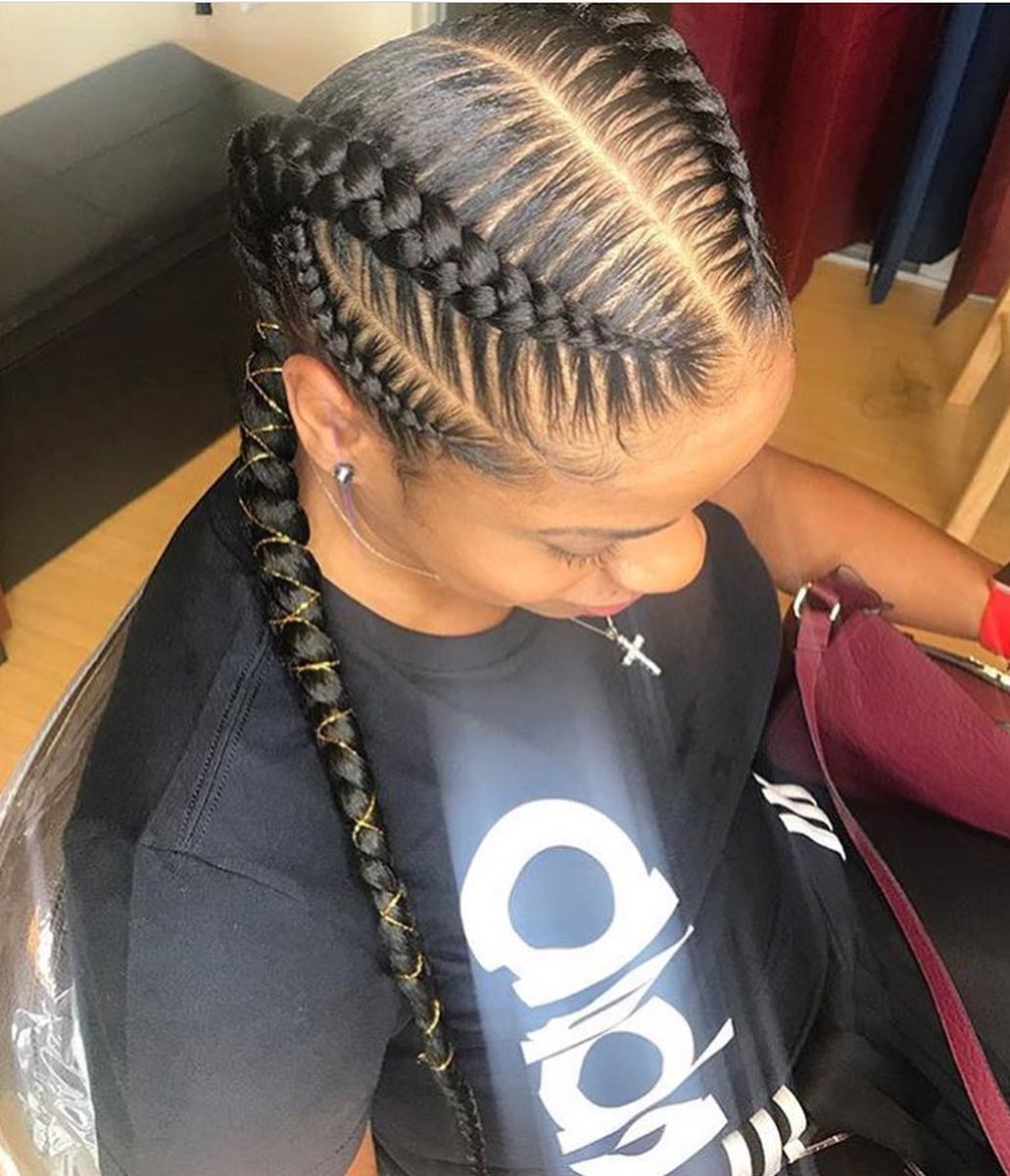Feed-in braids have taken the hair world by storm, and it's no wonder why. These beautiful braids offer a sleek and stylish way to enhance your look while protecting your natural hair. But what exactly are feed-in braids? Simply put, they're a type of braiding technique where synthetic hair is added into your natural hair to create fuller, longer, and more dramatic braids. This trend has become a favorite among celebrities and everyday folks alike, and it's easy to see why. Whether you're looking for a casual everyday style or a stunning updo for a special occasion, feed-in braids have got you covered.
But here's the thing—there's a lot more to feed-in braids than just slapping some extensions on your head. It's all about technique, maintenance, and finding the right style that suits your personality and lifestyle. In this guide, we'll dive deep into everything you need to know about feed-in braid styles, from the basics to advanced tips that will make your hair game stronger than ever. So grab your favorite drink, get comfy, and let's get started!
Before we jump into the nitty-gritty, it's important to note that feed-in braids aren't just a fleeting trend. They've been around for decades, but they've gained massive popularity in recent years thanks to social media platforms like Instagram and TikTok. Influencers and stylists have been showcasing their creativity with these braids, and now it's your turn to explore the endless possibilities. Let's make this journey fun, informative, and most importantly, inspiring!
Read also:Discover The Magic Of Catch It Kansas Your Ultimate Guide To Adventure
What Are Feed-In Braids?
Feed-in braids are a type of hair extension technique that involves weaving synthetic hair into your natural hair. The process creates a seamless blend that looks natural and polished. Unlike other braiding styles, feed-in braids are designed to be voluminous and textured, making them perfect for those who want to experiment with different lengths and styles. Think of them as a versatile canvas for your hair dreams.
One of the coolest things about feed-in braids is how customizable they are. You can choose from a variety of textures, colors, and patterns to match your vibe. Whether you're into sleek and straight or wild and curly, there's a feed-in braid style out there for you. Plus, they're relatively easy to maintain, which makes them a favorite among busy individuals who want to look fabulous without the hassle.
Why Choose Feed-In Braids?
There are tons of reasons why feed-in braids are worth considering. First off, they're super protective. If you're looking to give your natural hair a break from heat and chemicals, this is the perfect option. They also provide a great way to experiment with different looks without committing to a permanent change. And let's not forget—they're just plain gorgeous!
- Protects your natural hair from damage
- Allows for endless styling options
- Easy to maintain once installed
- Perfect for all hair types and textures
Popular Feed-In Braid Styles
Now that we've covered the basics, let's talk about some of the most popular feed-in braid styles. From classic to avant-garde, there's something for everyone. So whether you're feeling bold or understated, these styles will have you covered. Let's break it down:
Box Braids
Box braids are one of the most iconic feed-in braid styles. They're characterized by their uniform shape and clean parting, making them a favorite among fans of sleek and polished looks. These braids are versatile enough to be dressed up or down, so they're perfect for any occasion. Plus, they're relatively easy to maintain, which is always a win in our book.
Senegalese Twists
For those who love a bit of texture, Senegalese twists are the way to go. These braids involve twisting synthetic hair around your natural hair to create a rope-like effect. The result is a style that's both edgy and elegant. They're also great for adding volume and length to your look without sacrificing comfort.
Read also:Mydesi Net Latest Updates And News You Should Know
Cornrows with Feed-In Braids
Cornrows are a classic style that never goes out of fashion. When paired with feed-in braids, they create a stunning combination that's both functional and fashionable. This style is perfect for those who want to keep their scalp cool while still rocking a bold look. Plus, it's a great way to incorporate intricate designs into your hairstyle.
How to Choose the Right Style for You
Finding the perfect feed-in braid style can seem overwhelming, but it doesn't have to be. The key is to consider your lifestyle, hair type, and personal preferences. Ask yourself questions like: Do I want something low-maintenance? Am I looking for a dramatic change? How long do I want the style to last? Once you have a clear idea of what you're looking for, it'll be easier to narrow down your options.
Another important factor to consider is the texture of your natural hair. Some styles work better with certain hair types, so it's important to choose a style that complements your unique features. Don't be afraid to consult with a professional stylist if you're unsure—after all, they're the experts!
Tips for Choosing the Right Style
- Consider your daily routine and how much time you're willing to spend on maintenance
- Think about the occasions you'll be wearing the style for
- Take into account your hair type and texture
- Don't be afraid to experiment and try new things
The Installation Process
Now that you've picked out your dream style, it's time to talk about the installation process. While some people choose to DIY their feed-in braids, we highly recommend going to a professional stylist for the best results. A good stylist will not only ensure that your braids look amazing, but they'll also make sure they're installed safely and securely.
During the installation process, your stylist will start by sectioning your hair into even parts. They'll then weave synthetic hair into your natural hair using a technique that ensures a seamless blend. Depending on the style you choose, the process can take anywhere from a few hours to an entire day, so make sure you're prepared for a long session.
What to Expect During Installation
- Your hair will be thoroughly washed and dried
- Your stylist will section your hair into even parts
- Synthetic hair will be woven into your natural hair
- The braids will be styled according to your preferences
Maintenance Tips for Feed-In Braids
Once your feed-in braids are installed, it's important to take good care of them to ensure they last as long as possible. Proper maintenance is key to keeping your braids looking fresh and healthy. Here are a few tips to help you keep your braids in tip-top shape:
- Wash your braids every 1-2 weeks using a gentle shampoo and conditioner
- Avoid excessive moisture, as it can cause your braids to become weighed down
- Use a satin scarf or bonnet to protect your braids while sleeping
- Regularly check for loose braids and have them tightened as needed
Common Mistakes to Avoid
Even the best-laid plans can go awry if you're not careful. Here are a few common mistakes to avoid when it comes to feed-in braids:
- Not washing your braids regularly
- Using too much product, which can weigh down your braids
- Ignoring signs of scalp irritation or discomfort
- Wearing the same style for too long without giving your natural hair a break
How Long Do Feed-In Braids Last?
The longevity of your feed-in braids depends on several factors, including the quality of the installation and how well you take care of them. On average, feed-in braids can last anywhere from 4-8 weeks. However, it's important to remove them before they start pulling on your natural hair, as this can cause damage. Regular maintenance and check-ups with your stylist can help ensure that your braids last as long as possible.
Signs It's Time to Take Your Braids Out
- Your braids feel tight or uncomfortable
- Your scalp is showing signs of irritation
- Your natural hair is starting to show through
- You're experiencing breakage or shedding
Where to Find the Best Feed-In Braid Styles
When it comes to finding the best feed-in braid styles, location matters. If you're lucky enough to live in a city with a vibrant beauty scene, you're likely to find plenty of talented stylists who specialize in braiding. However, even if you're in a smaller town, there are still plenty of options available. Social media platforms like Instagram and TikTok are great resources for discovering new stylists and styles. Plus, many stylists offer virtual consultations, so you can get expert advice no matter where you are.
How to Choose the Right Stylist
- Look for reviews and testimonials from previous clients
- Check out their portfolio to see if their style aligns with your vision
- Ask about their experience with feed-in braids specifically
- Don't be afraid to ask questions and voice your concerns
Final Thoughts
Feed-in braid styles are more than just a trend—they're a lifestyle. Whether you're looking for a protective style, a way to experiment with new looks, or simply a way to enhance your natural beauty, feed-in braids have something for everyone. By following the tips and advice in this guide, you'll be well on your way to rocking the perfect feed-in braid style.
So what are you waiting for? Go out there and find the style that speaks to you. And remember, confidence is key. Whether you're walking down the street or strutting down the runway, your feed-in braids will turn heads and make a statement. Now go show the world what you're made of!
Don't forget to share your thoughts and experiences in the comments below. We'd love to hear about your journey with feed-in braids. And if you found this article helpful, be sure to share it with your friends and family. Let's keep the conversation going and inspire each other to embrace our unique beauty!
Table of Contents
- What Are Feed-In Braids?
- Popular Feed-In Braid Styles
- How to Choose the Right Style for You
- The Installation Process
- Maintenance Tips for Feed-In Braids
- Common Mistakes to Avoid
- How Long Do Feed-In Braids Last?
- Where to Find the Best Feed-In Braid Styles
- Final Thoughts


